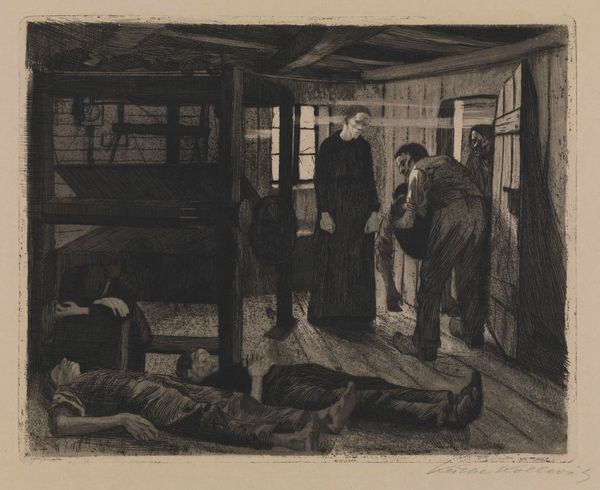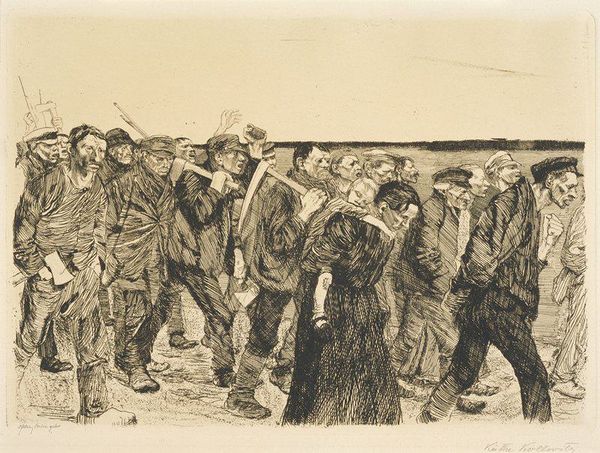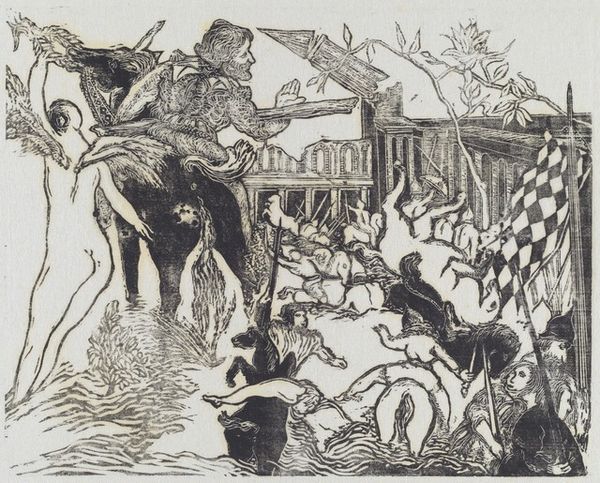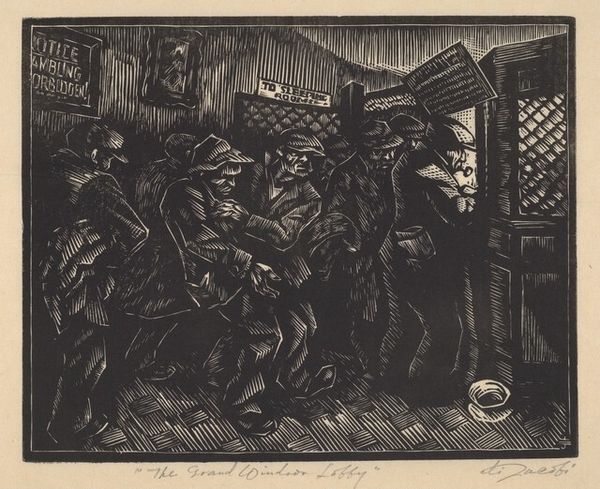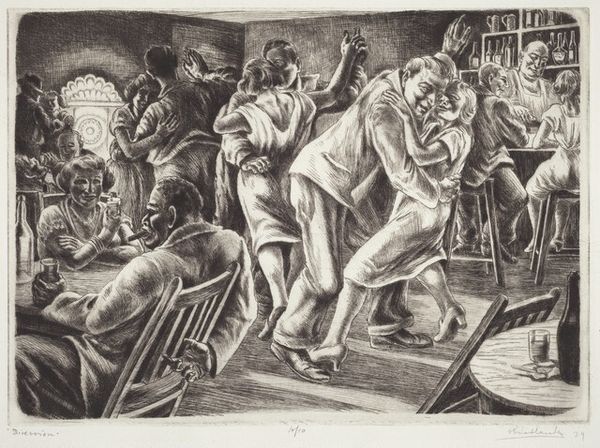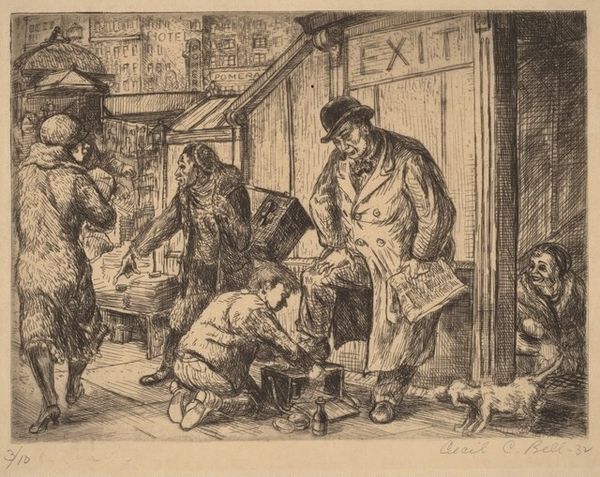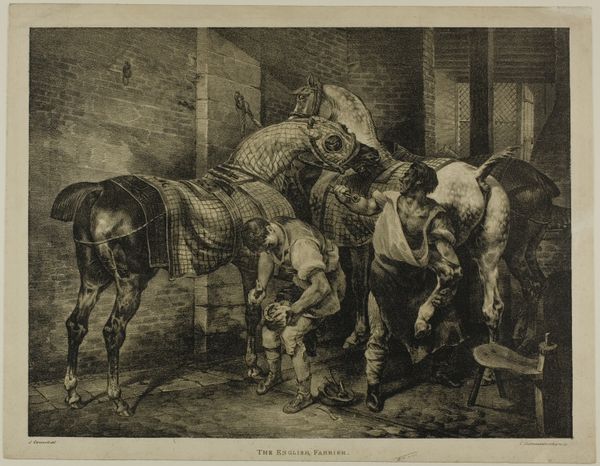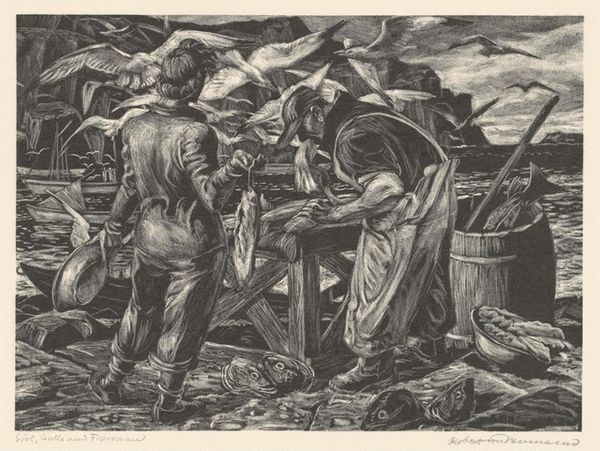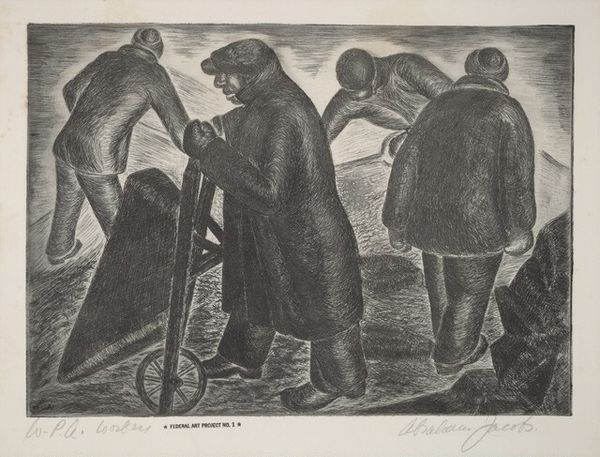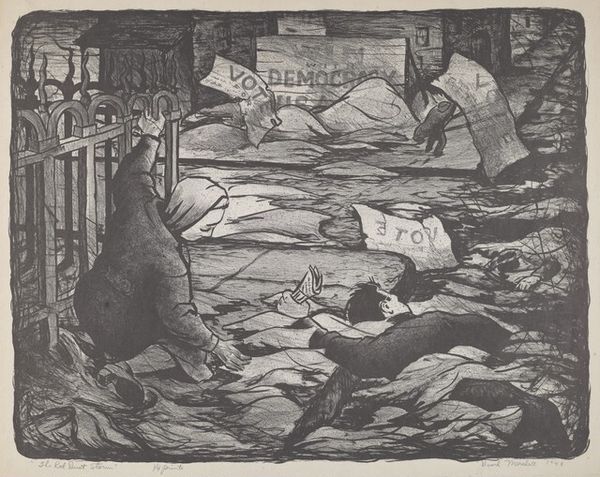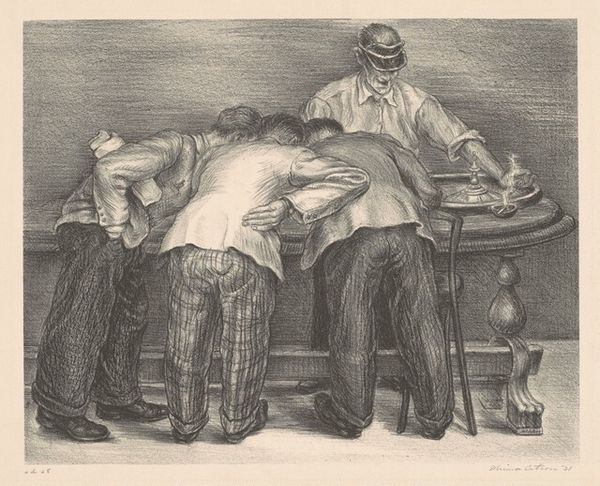
print, woodcut
# print
#
landscape
#
figuration
#
woodcut
#
genre-painting
#
realism
Dimensions: image: 204 x 255 mm sheet: 248 x 309 mm
Copyright: National Gallery of Art: CC0 1.0
Curator: This woodcut print, titled "Cowboys," was created by Richard Bennett in 1941. The figures seem very contained. Editor: It certainly evokes a quiet, stoic mood, doesn't it? The sharp lines of the woodcut enhance this stillness, as though the scene is paused—an observation, perhaps, on rural life at the time. Curator: Beyond the aesthetic considerations, let's consider the cultural narrative. This print presents cowboys not as heroic figures, but laborers seemingly captured during a lull. It reflects a shift in the popular perception of the West and manual labor that coincided with changing socioeconomic dynamics of the time. The production value involved with prints such as these allowed art to be disseminated more widely as compared with, say, large-scale painting. Editor: I'm particularly drawn to the interplay between the dense black and the stark white of the paper. The limited tonal range gives the image a dramatic impact, highlighting forms and defining the figures against the background with almost theatrical lighting. Curator: The composition subtly implies the labor hierarchy inherent to this lifestyle. The numbered jerseys subtly position them within a formal system of work. Editor: Right, and the woodcut medium really emphasizes texture through the incisions. Consider the artist's strategic tool work with varying width or spacing. It allows one to explore beyond the representation of figures in this context but through its own merits as a tangible form of artistry and creation. Curator: Agreed. Through this piece, Bennett's perspective is to demythologize the cowboy. The stoic presentation is the artist acknowledging both this historical legacy and the economic realities underpinning the iconic image of American folklore. Editor: This exploration into Richard Bennett's Cowboys reveals more than meets the initial eye; it unveils both the intricacies of the artwork, medium, and materials and historical perspectives into its time.
Comments
No comments
Be the first to comment and join the conversation on the ultimate creative platform.

